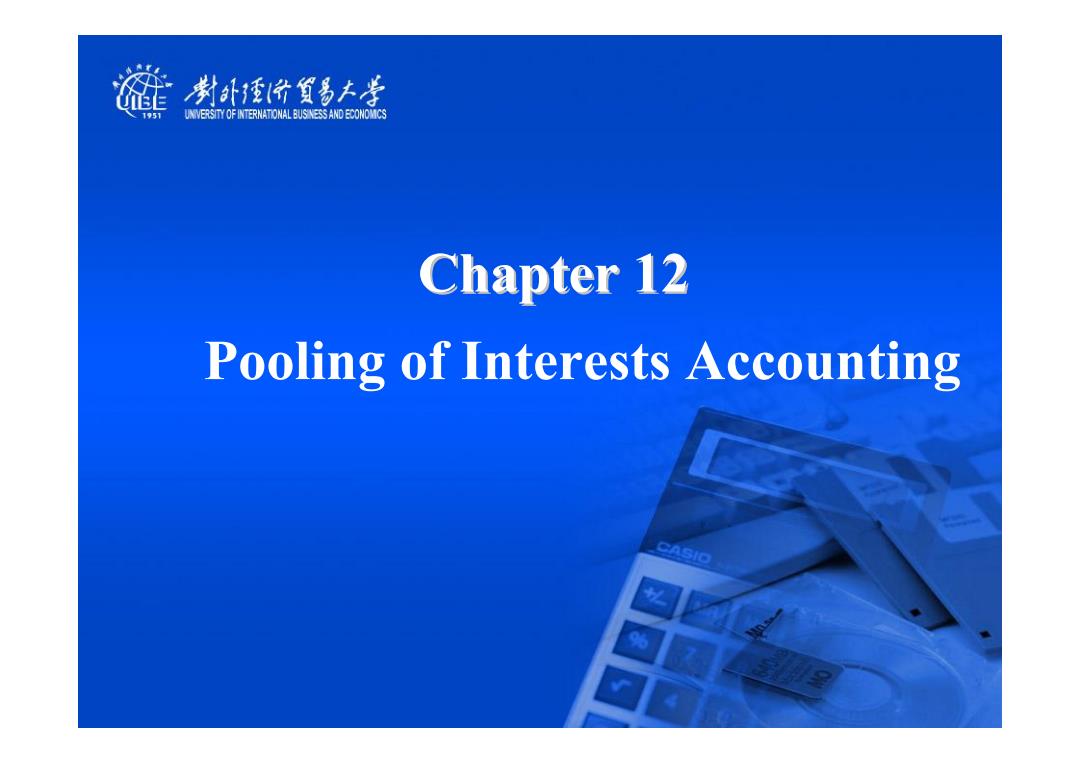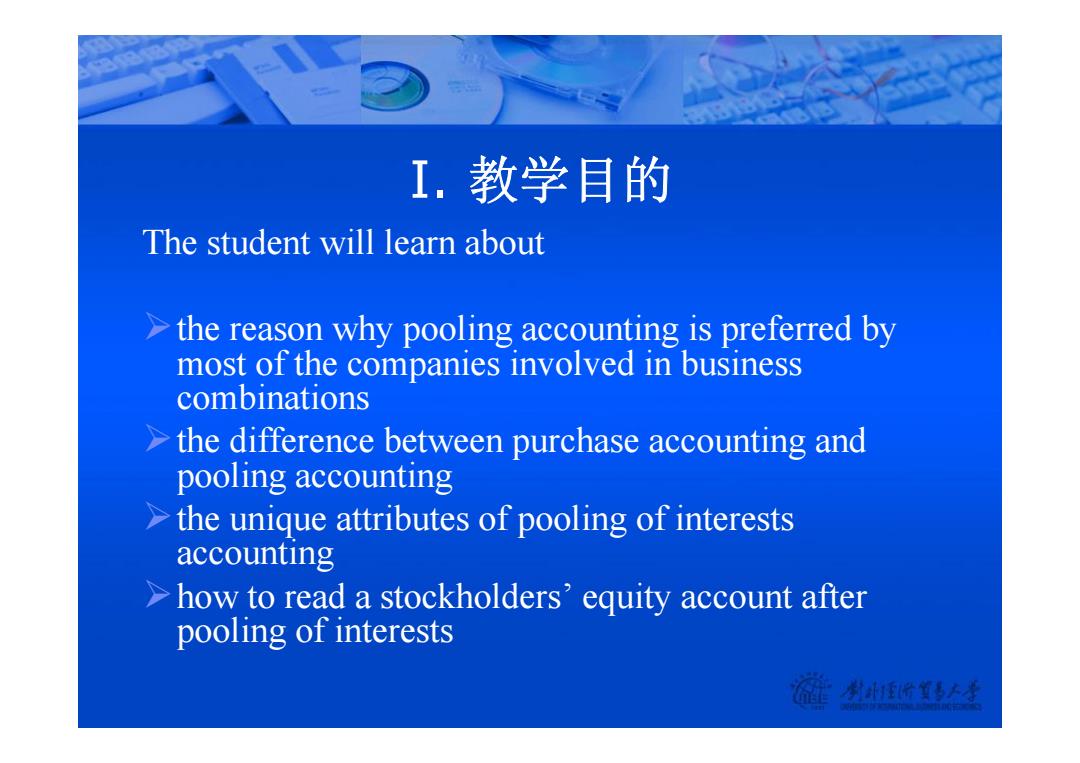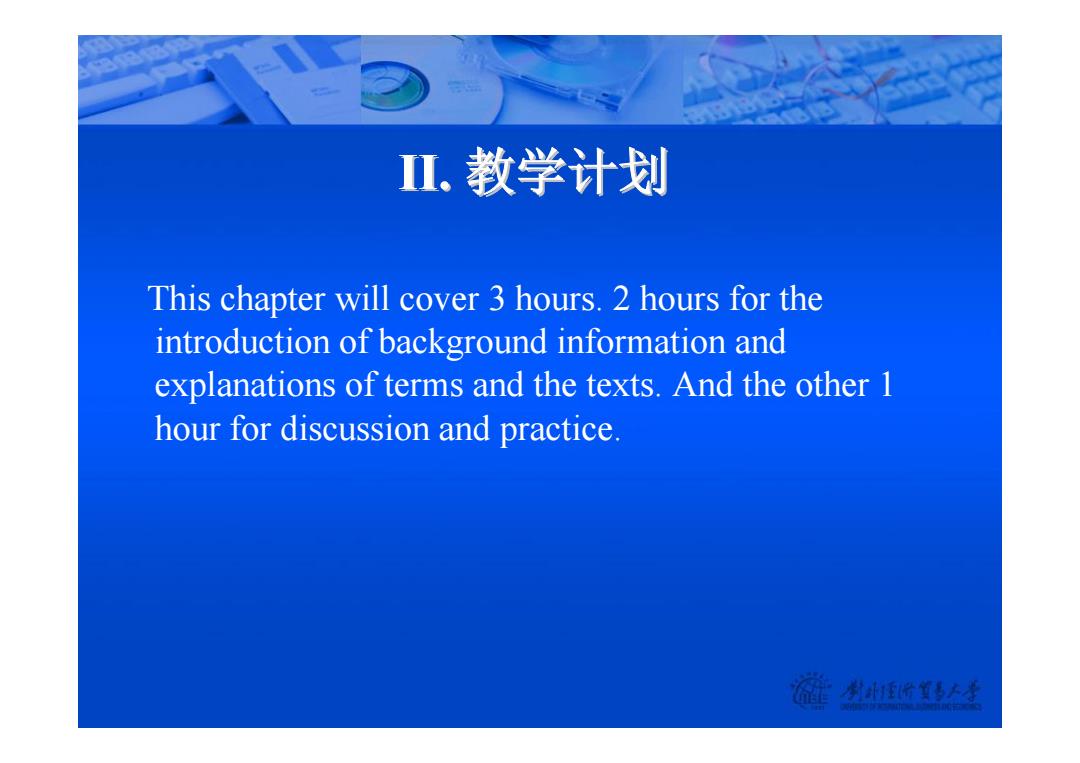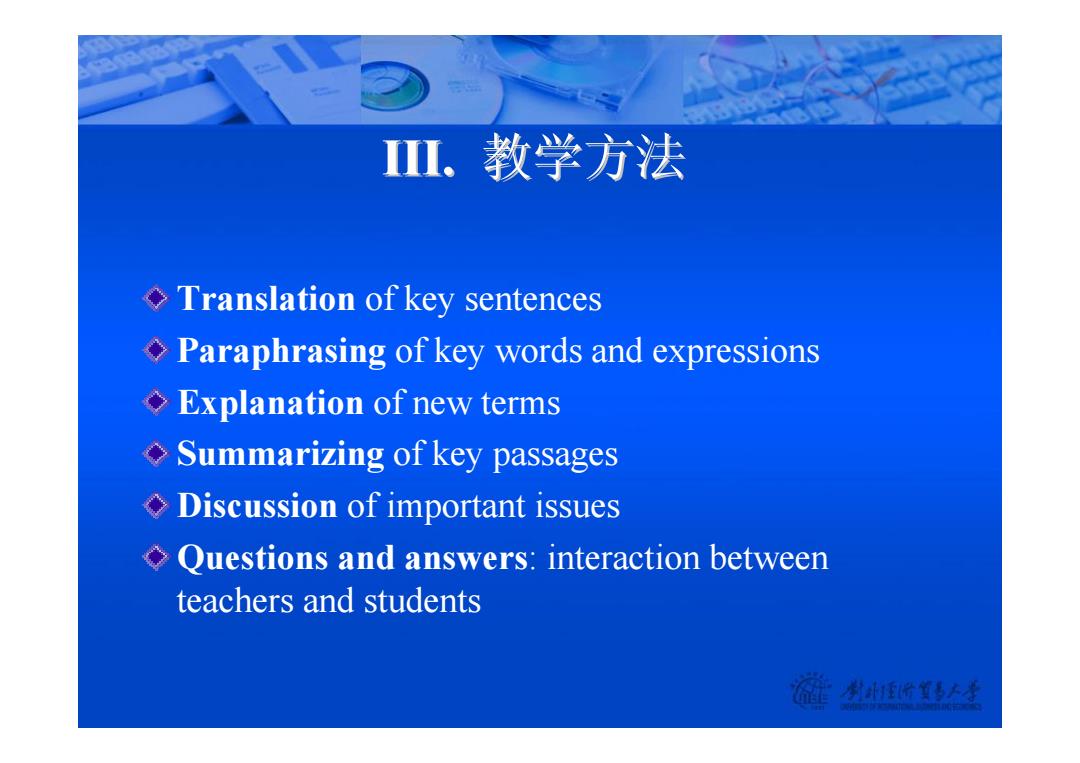
尉计酒价質多本孝 195 UNVERSITY OF INTERNATONAL BUS NESS AND ECONOMCS Chapter 12 Pooling of Interests Accounting CASIO
Chapter 12 Chapter 12 Pooling of Interests Accounting

I.教学目的 The student will learn about > the reason why pooling accounting is preferred by most of the companies involved in business combinations > the difference between purchase accounting and pooling accounting >the unique attributes of pooling of interests accounting >how to read a stockholders'equity account after pooling of interests 的重价首华大考
I. 教学目的 The student will learn about ¾the reason why pooling accounting is preferred by most of the companies involved in business combinations ¾the difference between purchase accounting and pooling accounting ¾the unique attributes of pooling of interests accounting ¾how to read a stockholders’ equity account after pooling of interests

Ⅱ.教学计划 This chapter will cover 3 hours.2 hours for the introduction of background information and explanations of terms and the texts.And the other 1 hour for discussion and practice. 的重价首多4
II. 教学计划 This chapter will cover 3 hours. 2 hours for the introduction of background information and explanations of terms and the texts. And the other 1 hour for discussion and practice

Ⅱ.教学方法 Translation of key sentences Paraphrasing of key words and expressions Explanation of new terms Summarizing of key passages Discussion of important issues Questions and answers:interaction between teachers and students 约重价生5
III. 教学方法 Translation of key sentences Paraphrasing of key words and expressions Explanation of new terms Summarizing of key passages Discussion of important issues Questions and answers: interaction between teachers and students

V.背景知识 Pooling of interests accounting is one of the primary methods used to account for business combinations. About half a century ago,the method was first applied to public utilities by regulatory bodies. 数价首华4
IV. 背景知识 Pooling of interests accounting is one of the primary methods used to account for business combinations. About half a century ago, the method was first applied to public utilities by regulatory bodies